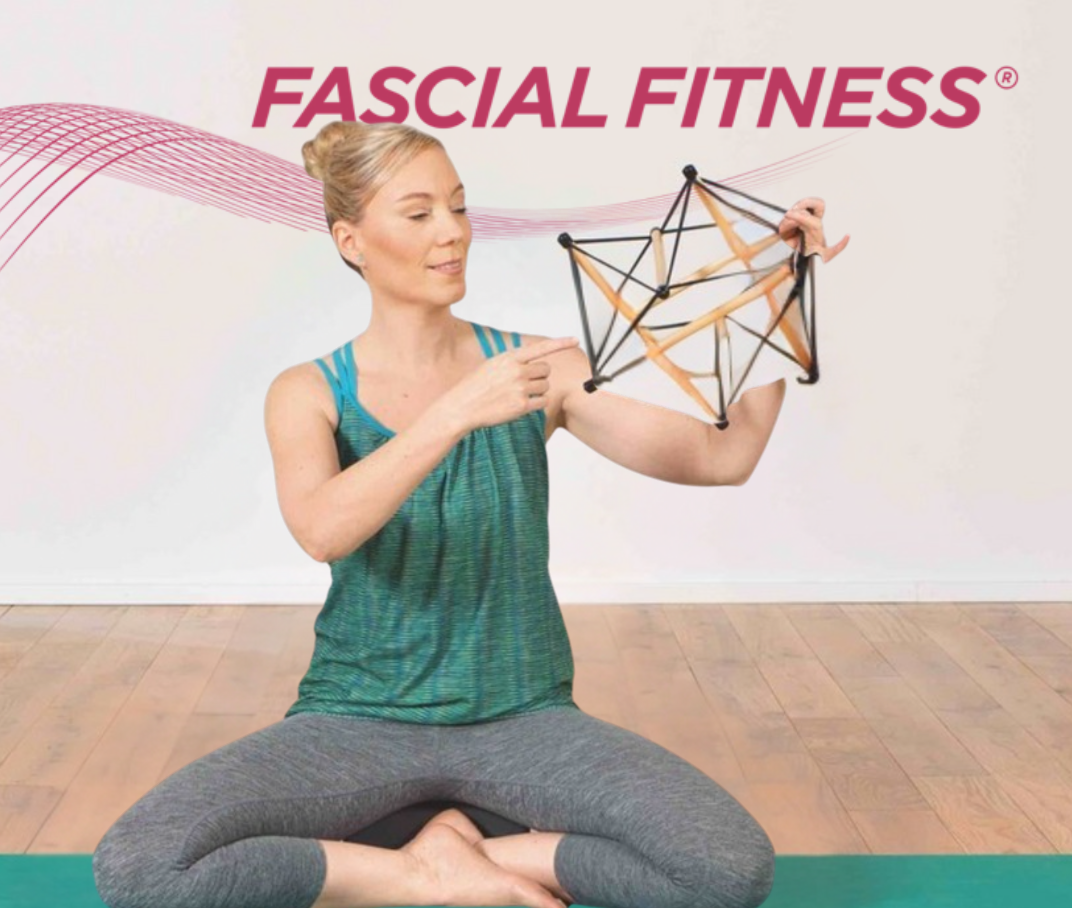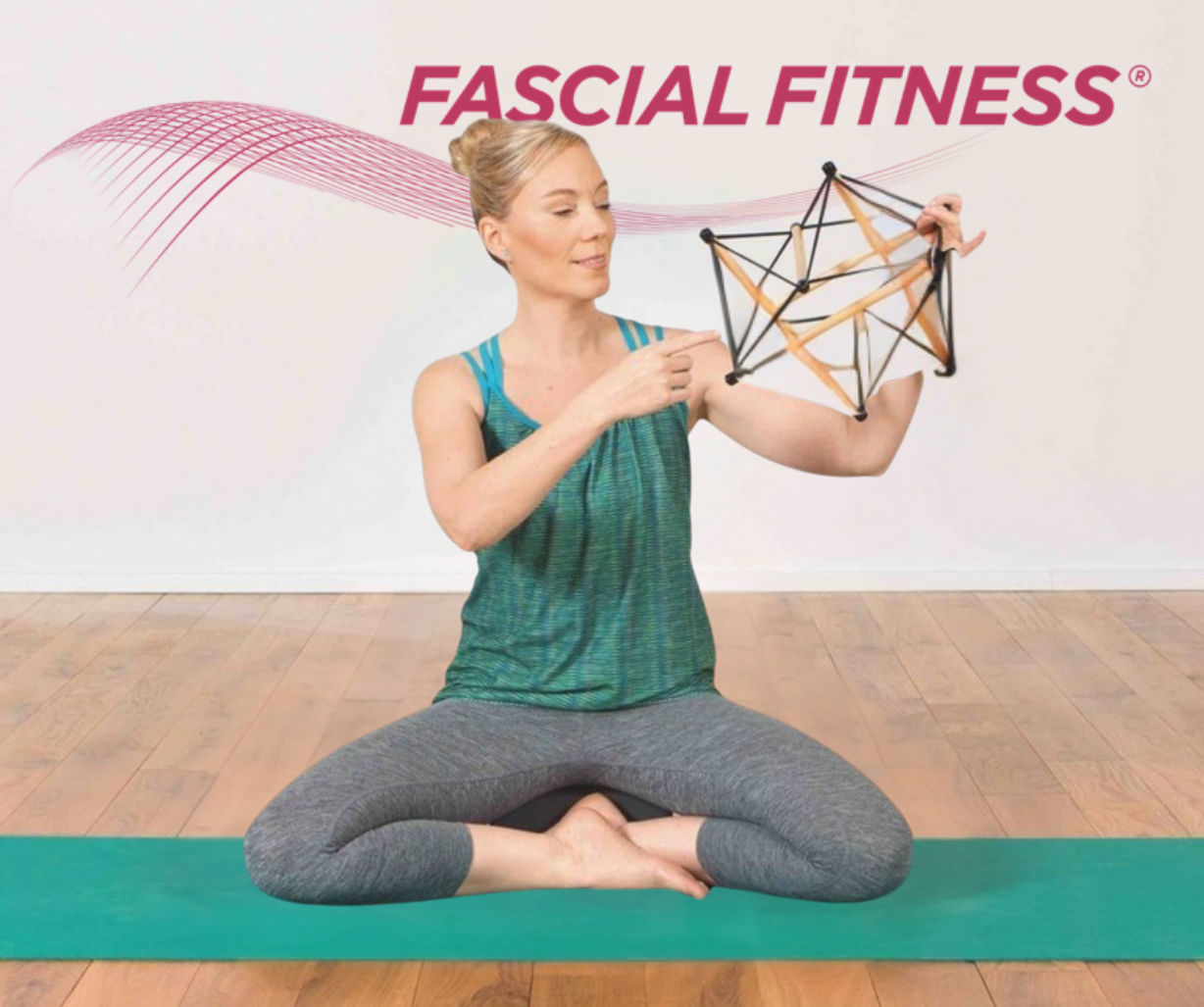When most people hear “fascia training,” they think, “Oh, like stretching, right?” Sure… but it’s also very much not just stretching.
Dr. Robert Schleip lays out a framework for Fascial Fitness that feels like a breath of fresh air for anyone tired of robotic reps and one-dimensional movement. It’s fluid, dynamic, and deeply intuitive, but also grounded in physiology.
Muscles and Fascia Aren’t the Same Thing
Yes, they’re connected. Yes, they work together. But training your biceps isn’t automatically training your fascia. That’s one of Schleip’s central arguments. Fascia adapts differently than muscle. It responds to slow, elastic loading, to variation, to whole-body movements that ask it to recoil and rebound.
Fascia thrives on stretch, tension, and oscillation. And the way we move in most traditional gym settings? Not so great at delivering that.
The Four Dimensions of Fascia Training
Rather than isolate one magic exercise, Schleip introduces a four-dimensional fascia training model that’s meant to mimic the real-world demands placed on the fascial system. These aren’t just fitness buzzwords, each dimension reflects a different biological demand that fascia requires to thrive.
1. Stretch
This isn’t your static quad hold or overhead triceps reach. Fascia likes long, whole-body stretches that move through spirals and diagonals — think cat-like movements, dynamic flows, or the way dancers seem to stretch from fingertip to toe in one seamless line. The goal isn’t max range, but melting tension through elongation and breath.
Key principle: Stretch with awareness, not aggression.
2. Elastic Rebound
This is where the trampoline analogy comes in. Your fascia loves springy movements — like skipping, hopping, bouncing — that store and release elastic energy. You’re not muscling through the motion; you’re rebounding. This helps the collagen network stay youthful and responsive.
Key principle: Think kangaroo, not kettlebell.
3. Proprioceptive Refinement
Fascia is packed with sensory nerve endings. It tells your brain where your limbs are in space. So, training fascia means training body awareness — through slow, precise movement, novel positions, and variable loading. Practitioners like Feldenkrais, Pilates, or certain martial arts have been doing this intuitively for decades.
Key principle: The more options your body has, the more resilient it becomes.
4. Fluid Hydration
No, not drinking water (although, sure, that helps too). This refers to tissue hydration through compression and release — rolling, squeezing, rebounding, and relaxing. Fascia needs pressure variation to move interstitial fluid and support tissue health. Tools like balls and foam rollers help here — but so do basic bodyweight movements done with intention.
Key principle: It’s not about smashing tissue — it’s about inviting it to rehydrate.
Fascial Lines and Tension Networks
One of the cooler ideas in this chapter is the concept of fascial lines — long, interconnected pathways that run through the body, like the famous “superficial back line” from your forehead down to your feet. Schleip references the work of Thomas Myers (of Anatomy Trains fame) to show that movement doesn’t happen in isolated parts… it happens through networks of tension that span the entire body.
If you’ve ever stretched your hamstring and felt it in your neck or back — that’s fascia talking.
Tissue Types and Training Responses
One size does not fit all in fascia training. Schleip introduces the idea of “Vikings” (stiffer, denser connective tissue types), “Contortionists” (softer, more elastic types), and everything in between. Each responds differently to training — and needs different inputs to stay balanced.
If you’re stiff and muscular, you may benefit more from elastic rebound and stretching. If you’re hypermobile, you might need more tension training and proprioceptive work. Know your tissue, train accordingly.
Fascia Doesn’t Auto-Adapt
Perhaps the biggest takeaway is this: Fascia doesn’t get trained just because you move. It needs specific, intentional stimuli. That’s why traditional strength or endurance programs don’t automatically result in fascial resilience. Schleip’s model urges us to add fascial training — not necessarily replace what we’re already doing, but to round it out.
It’s the missing element that helps explain why people can be “strong but stiff,” “fit but fragile,” or why some folks keep getting injured despite solid programs. Fascia is the common denominator.
Bottom Line?
If muscle is the engine, fascia is the suspension system. You wouldn’t drive a Ferrari with rusted shocks. Fascial Fitness lays the groundwork for a smarter, more holistic approach to training — one that feels more human, more enjoyable, and a lot more sustainable.In the next post, we’ll explore the actual exercises that bring this theory to life. And good news: it’s not another “three sets of ten” kind of deal.

Unlock your full potential as a movement professional
Become a Certified Fascial Fitness Trainer
Join our 10-week virtual mentorship program, featuring live calls with fascia research pioneers—including Dr. Robert Schleip himself. Deepen your understanding of fascia-focused training, gain exclusive insights from leading experts, and get hands-on guidance to confidently integrate this cutting-edge approach into your practice.


